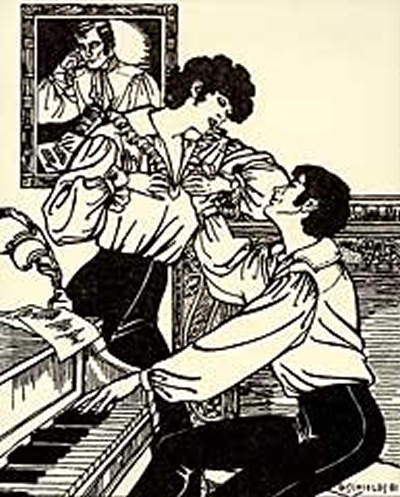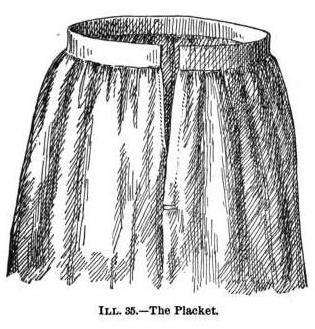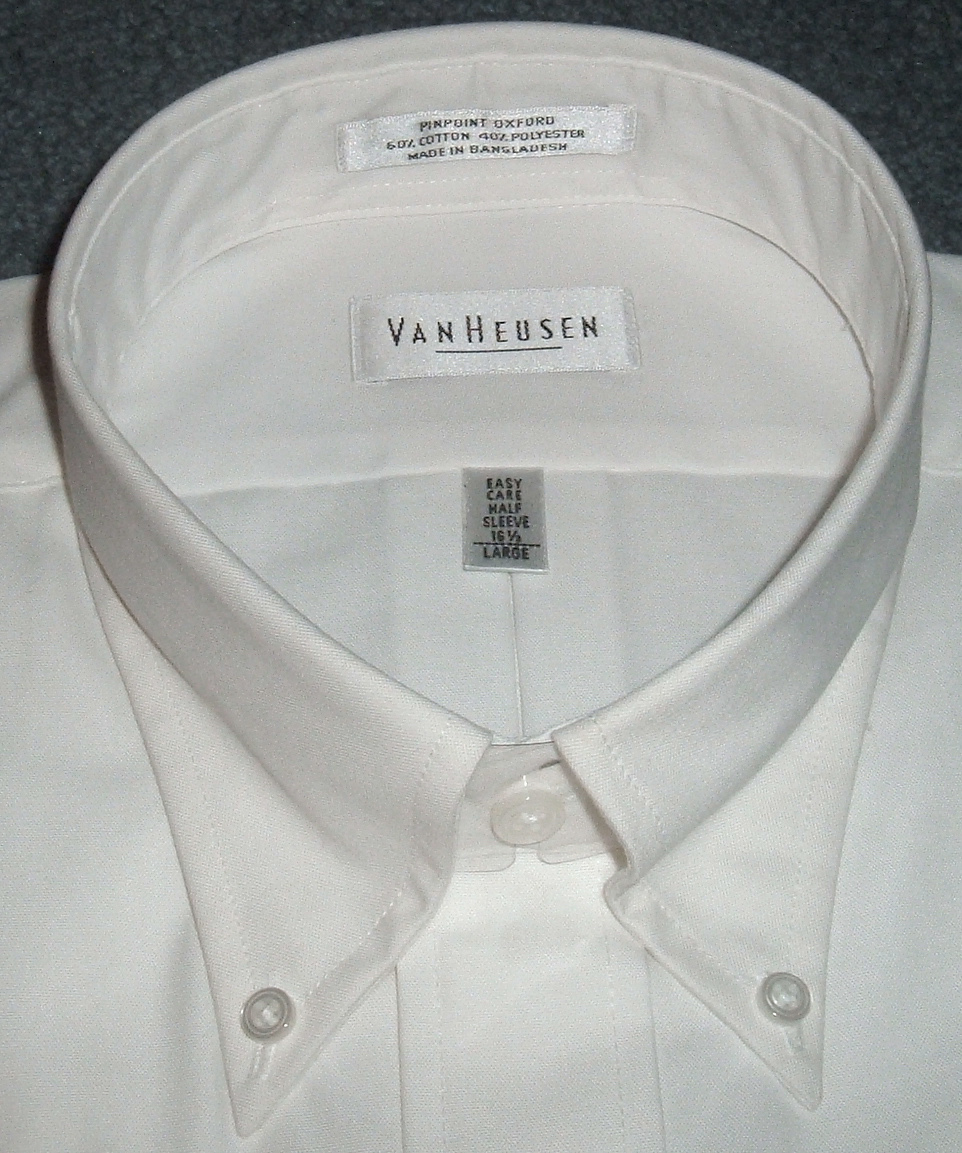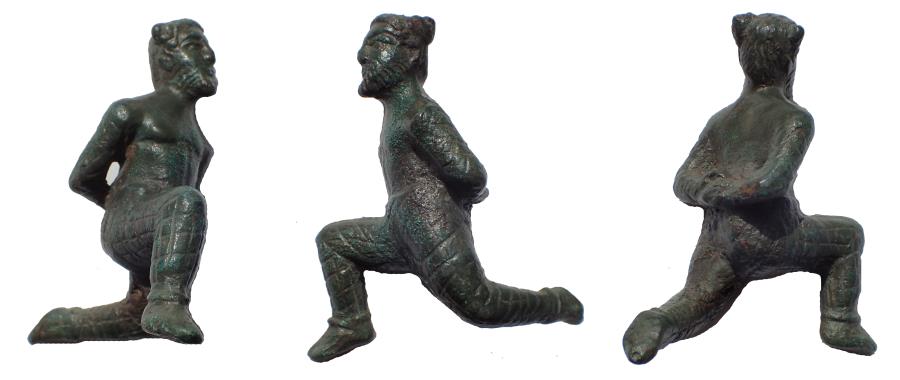|
Camp Shirt
A camp shirt, variously known as a cabin shirt, Cuban collar shirt, cabana shirt, and lounge shirt, is a loose, straight-cut, woven, short-sleeved button-front shirt or blouse with a simple placket front opening and a "camp collar"–a one-piece collar (no band collar) that can be worn open and spread or closed at the neck with a button and loop. It usually has a straight hemmed bottom falling at hip level, not intended to be tucked into trousers. Lawrence Zarian. 2014: Bird Street Books. While camp shirts are generally made from plain, single-color fabrics, variants include duo-tone |
Shirt
A shirt is a cloth garment for the upper body (from the neck to the waist). Originally an undergarment worn exclusively by men, it has become, in American English, a catch-all term for a broad variety of upper-body garments and undergarments. In British English, a shirt is more specifically a garment with a collar, sleeves with cuffs, and a full vertical opening with buttons or snaps (North Americans would call that a " dress shirt", a specific type of collared shirt). A shirt can also be worn with a necktie under the shirt collar. History The world's oldest preserved garment, discovered by Flinders Petrie, is a "highly sophisticated" linen shirt from a First Dynasty Egyptian tomb at Tarkan, dated to : "the shoulders and sleeves have been finely pleated to give form-fitting trimness while allowing the wearer room to move. The small fringe formed during weaving along one edge of the cloth has been placed by the designer to decorate the neck opening and side seam." The s ... [...More Info...] [...Related Items...] OR: [Wikipedia] [Google] [Baidu] |
Blouse
A blouse () is a loose-fitting upper garment that may be worn by workmen, peasants, artists, women, and children.The Concise Oxford English Dictionary It is typically gathered at the waist or hips (by tight hem, pleats, parter, or belt) so that it hangs loosely ("blouses") over the wearer's body. Today, the word most commonly refers to a girl's or woman's dress shirt, although there is considerable confusion between a true blouse and a women's shirt. It can also refer to a man's shirt if it is a loose-fitting style (e.g. poet shirts and Cossack shirts), though it rarely is. Traditionally, the term has been used to refer to a shirt which blouses out or has an unmistakably feminine appearance, although even many "standard" shirts today have a somewhat blousy fit, and the numbers of men wearing such shirts may match (or even exceed) that of women wearing actual blouses. The term is also used for some men's military uniform jackets. Etymology Blouse is a loanword from French to ... [...More Info...] [...Related Items...] OR: [Wikipedia] [Google] [Baidu] |
Placket
A placket (also spelled placquet) is a finished opening in the upper part of trousers or skirts, or at the neck, front, or sleeve of a garment. The finish frequently consists of a fold of fabric that is attached to the opening in order for the fasteners (buttons, hooks, press studs) to be sewn to it. In modern usage, the term placket often refers to these double layers of fabric. Plackets are almost always used to allow clothing to be put on or removed easily but are sometimes used purely as a design element. Modern plackets often contain fabric facings or attached bands to surround and reinforce fasteners such as buttons, snaps, or zippers. Construction Plackets are almost always made of more than one layer of fabric, and often have interfacing in between the fabric layers. This is done to give support and strength to the placket fabric because the placket and the fasteners on it are often subjected to stress when the garment is worn. The two sides of the placket often overla ... [...More Info...] [...Related Items...] OR: [Wikipedia] [Google] [Baidu] |
Collar (clothing)
In clothing, a collar is the part of a shirt, dress, coat or blouse that fastens around or frames the neck. Among clothing construction professionals, a collar is differentiated from other necklines such as revers and lapels, by being made from a separate piece of fabric, rather than a folded or cut part of the same piece of fabric used for the main body of the garment. A collar may be permanently attached to the main body of the garment (e.g. by stitching) or detachable. Word usage The Oxford English Dictionary traces ''collar'' in its modern meaning to c. 1300, when collars served as neck-protecting armour. History Today's shirt collars descend from the rectangular band of linen around the neck of 16th century shirts. Separate ruffs exist alongside attached ruffled collars from the mid-16th century, usually to allow starching and other fine finishing, or to make collar-laundering easier.Compare: During the medieval period and sporadically thereafter, people wore ... [...More Info...] [...Related Items...] OR: [Wikipedia] [Google] [Baidu] |
Band Collar
A band collar is a standing band-shaped collar that encircles the neck without a full turndown or a collar "cape". It can be any height or "stand", but is usually under 2" at the front, so as not to push up into the chin. Variations of the band collar are the clerical collar, the mandarin collar and the cadet collar. See also * Collar (clothing) In clothing, a collar is the part of a shirt, dress, coat or blouse that fastens around or frames the neck. Among clothing construction professionals, a collar is differentiated from other necklines such as revers and lapels, by being made ... References Neckwear {{clothing-stub ... [...More Info...] [...Related Items...] OR: [Wikipedia] [Google] [Baidu] |
Button
A button is a fastener that joins two pieces of fabric together by slipping through a loop or by sliding through a buttonhole. In modern clothing and fashion design, buttons are commonly made of plastic but also may be made of metal, wood, or seashell. Buttons can also be used on containers such as wallets and bags. Buttons may be sewn onto garments and similar items exclusively for purposes of fashion, ornamentation. In the applied arts and crafts, craft, a button can be an example of folk art, studio craft, or even a miniature art object, work of art. In archaeology, a button can be a significant Artifact (archaeology), artifact. History Buttons and button-like objects used as ornaments or Seal (emblem), seals rather than fasteners have been discovered in the Indus Valley civilization during its Kot Diji phase (c. 2800–2600 BC). Buttons as apparel have been found at sites of the Catacomb culture, Russia (2500-1950 BC), at the Tomb of the Eagles, Scotland (2200–1800 BC), ... [...More Info...] [...Related Items...] OR: [Wikipedia] [Google] [Baidu] |
Trouser
Trousers (British English), slacks, or pants ( American, Canadian and Australian English) are an item of clothing worn from the waist to anywhere between the knees and the ankles, covering both legs separately (rather than with cloth extending across both legs as in robes, skirts, dresses and kilts). Shorts are similar to trousers, but with legs that come down only as far as the knee, but may be considerably shorter depending on the style of the garment. To distinguish them from shorts, trousers may be called "long trousers" in certain contexts such as school uniform, where tailored shorts may be called "short trousers" in the UK. The oldest known trousers, dating to the period between the thirteenth and the tenth centuries BC, were found at the Yanghai cemetery in Turpan, Xinjiang ( Tocharia), in present-day western China.Smith, Kiona N.,The world's oldest pants are a 3,000-year-old engineering marvel, ''Ars Technica'', 4 April 2022. Made of wool, the trousers had straight le ... [...More Info...] [...Related Items...] OR: [Wikipedia] [Google] [Baidu] |
Bowling Shirt
A bowling shirt, often referred to as a "bowler" or "bowling" shirt, is a distinctive and iconic piece of clothing closely associated with the sport of bowling. These shirts have a style of camp shirt in which the fabric, color and design vary greatly, but frequently incorporate contrasting earth tones and simple geometric designs, with more expensive ones often made of silk. They may have a single pocket on the left—small logos or monogram initials are also common options on the left breast. Origins Bowling shirts have their roots in the 1950s when bowling became a popular recreational activity in the United States. During this time, bowling alleys were not just places for competition but also social gatherings. To match the leisurely atmosphere of bowling, bowlers began wearing shirts designed explicitly for the sport. These shirts were a departure from traditional attire and quickly gained popularity for their comfort and style. Culture The shirt is associated most directly w ... [...More Info...] [...Related Items...] OR: [Wikipedia] [Google] [Baidu] |
Aloha Shirt
The aloha shirt (), also referred to as a Hawaiian shirt, is a style of dress shirt originating in Hawaii. They are collared and buttoned dress shirts, usually short-sleeved and made from printed fabric. They are traditionally worn untucked, but can be worn tucked into the waist of trousers. They are worn casually or as informal business attire in Hawaii. "Aloha Friday", or Casual Friday, a now-common tradition of celebrating the end of the workweek by wearing more casual attire on Fridays, initially grew out of an effort to promote aloha shirts. Design Aloha dress shirts are printed, mostly short-sleeved, and collared. They almost always have buttons, sometimes for the entire length of the shirt or at least up to the chest. They usually have a left chest pocket sewn in, often with attention to ensure the printed pattern remains continuous. Aloha shirts may be worn by men or women. Women's aloha shirts usually have a lower-cut, v-neck style. The lower hems are straight, and ... [...More Info...] [...Related Items...] OR: [Wikipedia] [Google] [Baidu] |
Barong Tagalog
The barong tagalog, more commonly known simply as barong (and occasionally baro), is an Embroidery, embroidered long-sleeved formal shirt for men and a national dress of the Fashion and clothing in the Philippines, Philippines. Barong tagalog combines elements from both the precolonial Filipino people, native Filipino and colonial Spanish empire, Spanish clothing styles. It is traditionally made with sheer textiles (''nipis'') woven from piña or abacá; although in modern times, cheaper materials like organza silk, ramie or polyester are also used. It is a common formal or semi-formal attire in Culture of the Philippines, Filipino culture, and is worn untucked over an undershirt with belted trousers and dress shoes. Baro't saya is the feminine equivalent of barong tagalog, with the Maria Clara gown being the formal variant of the latter. Barong tagalog was also known as ''camisa fuera'' ("outer shirt") in Philippine Spanish. Etymology The term "barong tagalog" is usually sho ... [...More Info...] [...Related Items...] OR: [Wikipedia] [Google] [Baidu] |
Batik
Batik is a dyeing technique using wax Resist dyeing, resist. The term is also used to describe patterned textiles created with that technique. Batik is made by drawing or stamping wax on a cloth to prevent colour absorption during the dyeing process. This creates a patterned negative when the wax is removed from the dyed cloth. Artisans may create intricate coloured patterns with multiple cycles of wax application and dyeing. Patterns and motifs vary widely even within countries. Some patterns hold symbolic significance and are used only in certain occasions, while others were created to satisfy market demand and fashion trends. Resist dyeing using wax has been practised since ancient times, and it is attested in several world cultures, such as Egypt, southern China (especially among hilltribes like the Miao people, Miao, Bouyei people, Bouyei, and Gejia peoples), India, Indonesia, Malaysia, Nigeria, and Sri Lanka. The technique developed Batik in Indonesia, in Indonesia (es ... [...More Info...] [...Related Items...] OR: [Wikipedia] [Google] [Baidu] |
Guayabera
The guayabera is a men's summer shirt, worn outside the trousers, distinguished by two columns of closely sewn pleats running the length of the front and back of the shirt. Typically made of linen, silk, or cotton, and appropriate for hot and/or humid weather, guayaberas are popular in Colombia, Mexico, Central America, the Caribbean (especially Cuba, the Dominican Republic, Panama, Haiti, and Puerto Rico), South America, Southeast Asia, Spain (specifically Andalucia and the Canary Islands), and Portugal. Design The design of a typical guayabera is distinguished by several details: * Either two or four patch pockets and two vertical rows of '' alforzas'' (fine, tiny pleats, usually 10, sewn closely together) run down the front and three down the back of the shirt. The pockets are detailed with ''alforzas'' that are identical to, and aligned with, the ''alforzas'' on the body of the shirt. * Long or short sleeves, the more common being the short-sleeved version, having a cuffed ... [...More Info...] [...Related Items...] OR: [Wikipedia] [Google] [Baidu] |









